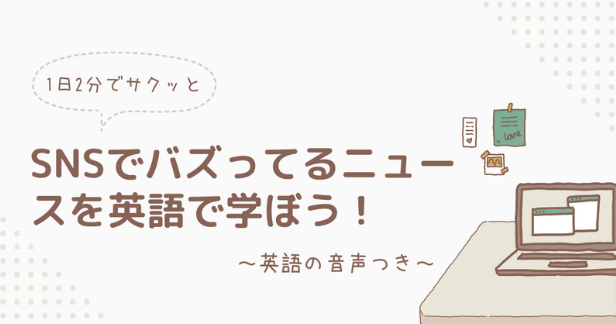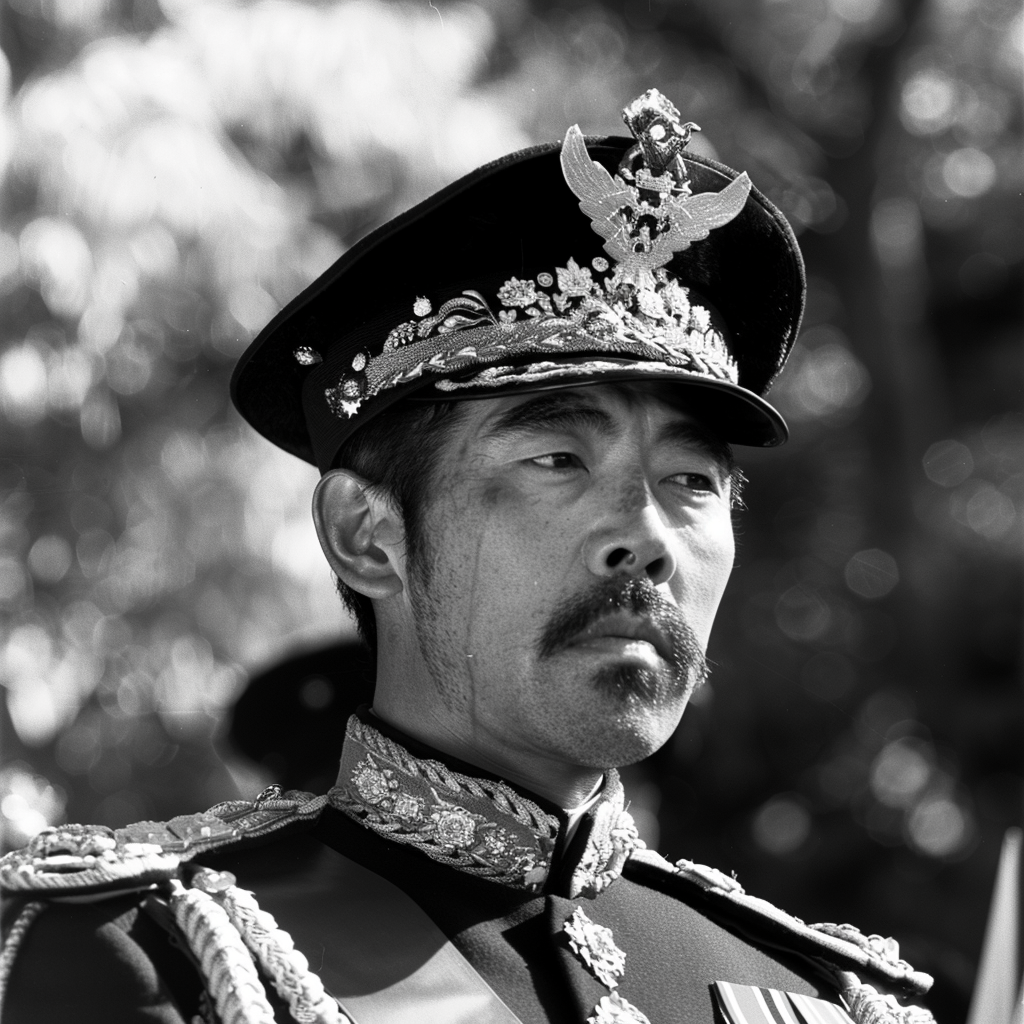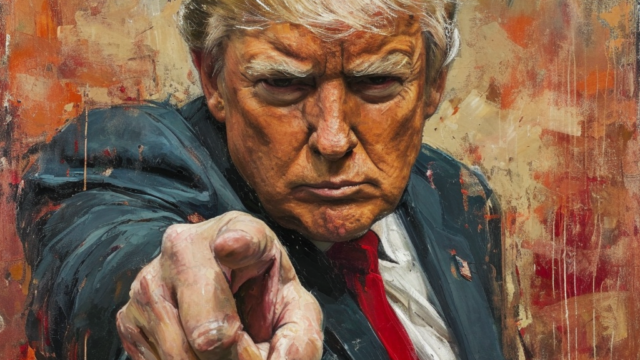
The Evolution of Showa Day: From Emperor’s Birthday to National Reflection
April 29th is Showa Day in Japan. It was originally celebrated as the birthday of Emperor Hirohito until his death in 1989. The holiday was then renamed Greenery Day to honor the Emperor’s love for nature. In 2007, Greenery Day was moved to May 4th, and April 29th became Showa Day to reflect on the turbulent Showa period and think about Japan’s future. (63語)
日本語訳
「昭和の日の変遷:天皇誕生日から国民の内省の日へ」
4月29日は日本の昭和の日だ。もともとは1989年の死去まで、昭和天皇の誕生日として祝われていた。その後、天皇の自然愛を称えて「みどりの日」に改称された。2007年、みどりの日は5月4日に移り、4月29日は激動の昭和時代を振り返り、日本の将来を考える昭和の日となった。

単語・熟語チェック
・evolution 進化、発展
・emperor 天皇
・birthday 誕生日
・national 国民の
・reflection 反省、内省
・originally もともとは
・celebrate 祝う
・rename 改名する
・honor 称える、敬う
・turbulent 激動の
・period 時代、期間
単語解説
・evolution
⇒進化、発展という意味の名詞。動詞は evolve。生物の進化だけでなく、物事の段階的な変化や発展も表します。語源はラテン語の「巻き出す」という意味の evolvere から。Showa Day の意味合いが時代とともに変化してきた過程を表現するのにふさわしい単語です。
・emperor
⇒天皇、皇帝という意味の名詞。語源はラテン語の imperare「命令する」から派生した imperator「将軍、皇帝」に由来。日本では emperor は天皇を指す言葉として定着しています。
・turbulent
⇒激しく乱れた、騒々しい、激動の、という意味の形容詞。名詞は turbulence。語源はラテン語の「乱れる」を意味する動詞 turbare から。昭和時代は戦前・戦中・戦後の激動の時代であり、まさに turbulent という表現がぴったりです。平成が平和な時代だったのに対し、昭和は乱世のイメージが強いですね。
・reflect on
⇒熟考する、反省する、という意味のイディオム。reflect は「反射する、反映する、熟考する」などの意味がある動詞。on を伴うと「〜について反省する、熟考する」という意味になります。昭和の日は激動の昭和時代を振り返り、日本の将来を考える日と位置づけられています。
原ちゃんチェック
昭和の日の意味合いの変遷は、日本の近現代史の節目とも重なりますね。戦前の軍国主義から戦後の民主主義へ、そして高度経済成長を経て平和と繁栄を享受した時代へ。
昭和天皇の存在は、この激動の時代と密接に結びついています。戦争の責任や象徴天皇制のあり方など、昭和天皇をめぐる議論は今なお続いていますが、昭和の日は天皇個人だけでなく、昭和という時代全体を振り返る機会になっているのだと思います。
みどりの日が自然への感謝を表すのに対し、昭和の日は歴史への思いを馳せる日。両者は対照的ですが、いずれも日本人にとって大切な価値観を映し出しているように感じます。
激動の昭和を経て、平和で豊かな時代を築いてきた先人たちの努力に思いを致し、次の時代を担う私たち一人一人が、より良い社会の実現に向けて何をすべきかを考える。そんな内省の日であってほしいですね。
関連URL
原田英語深堀りチェック
【昭和時代に関する英語表現やイディオム20】
1. Economic miracle [高度経済成長] – The rapid economic growth and development experienced by Japan during the post-war Showa era. (戦後の昭和時代に日本が経験した急速な経済成長と発展。)
2. Baby boom [ベビーブーム] – A significant increase in the birth rate following World War II, resulting in a large generation born between 1946 and 1964. (第二次世界大戦後の出生率の大幅な増加により、1946年から1964年の間に生まれた大世代。)
3. Bubble economy [バブル経済] – The period of inflated asset prices and speculation in Japan during the late 1980s. (1980年代後半の日本における資産価格の高騰と投機の時期。)
4. Shinkansen [新幹線] – The high-speed bullet train network that began operation in 1964, symbolizing Japan’s technological advancement. (1964年に運行を開始した高速新幹線ネットワークで、日本の技術の進歩を象徴しています。)
5. Salary man [サラリーマン] – A term referring to white-collar workers, particularly middle-class men, who were known for their loyalty to their companies. (ホワイトカラーの労働者、特に会社に忠誠心を持つことで知られる中流階級の男性を指す言葉。)
6. Tokyo Olympics [東京オリンピック] – The 1964 Summer Olympics held in Tokyo, which showcased Japan’s post-war recovery and modernization. (戦後の日本の復興と近代化を示した1964年の東京夏季オリンピック。)
7. Kawaii culture [カワイイ文化] – The rise of cute and adorable aesthetics in Japanese popular culture, including fashion, manga, and anime. (ファッション、漫画、アニメなど、日本の大衆文化におけるかわいらしい美学の台頭。)
8. Karaoke [カラオケ] – A popular form of entertainment that originated in Japan during the 1970s, involving singing along to recorded music. (1970年代に日本で始まった、録音された音楽に合わせて歌うポピュラーな娯楽の形態。)
9. Walkman [ウォークマン] – The iconic portable cassette player released by Sony in 1979, revolutionizing personal music consumption. (1979年にソニーが発売した画期的なポータブルカセットプレーヤーで、パーソナルな音楽の消費に革命をもたらした。)
10. Pachinko [パチンコ] – A popular mechanical game and recreational activity in Japan, resembling a vertical pinball machine. (日本で人気のある機械式ゲームであり、縦型のピンボールマシンに似たレクリエーション活動。)
11. Manga [漫画] – Japanese comic books and graphic novels that gained international popularity during the Showa era. (昭和時代に国際的な人気を博した日本の漫画や図像小説。)
12. Anime [アニメ] – Japanese animated productions, often adapted from manga, that became globally recognized during the Showa period. (昭和時代に世界的に認知されるようになった、漫画から翻案されることが多い日本のアニメ作品。)
13. Salaryman senka [サラリーマン川柳] – A popular form of short, humorous poetry that satirizes the life and struggles of white-collar workers. (ホワイトカラーの労働者の生活と苦悩を風刺した、人気のある短い滑稽な詩の形式。)
14. Keiretsu [系列] – A type of informal business group, often centered around a bank or major corporation, that characterized Japan’s economic structure. (日本の経済構造を特徴づける、銀行や大企業を中心とした一種の非公式なビジネスグループ。)
15. Lifetime employment [終身雇用] – The practice of hiring employees straight out of school and providing them with job security until retirement. (学校を卒業したばかりの従業員を雇用し、退職するまで雇用の安定を提供する慣行。)
16. Seniority system [年功序列] – A system in which employees are promoted and compensated based on their length of service within a company. (従業員が企業内での勤続年数に基づいて昇進し、報酬を受ける制度。)
17. Shinkansen wedding [新幹線結婚式] – A unique wedding ceremony held on a bullet train, symbolizing the modernization of Japanese society. (日本社会の近代化を象徴する、新幹線での独特な結婚式。)
18. Danchi [団地] – Large, multi-family housing complexes that were built to accommodate the growing urban population during the post-war era. (戦後、増加する都市人口に対応するために建設された大規模な集合住宅。)
19. Motorization [モータリゼーション] – The rapid growth in personal car ownership and usage that occurred in Japan during the 1960s and 1970s. (1960年代と1970年代に日本で起こった、自家用車の所有と使用の急速な増加。)
20. Lost Decade [失われた10年] – The economic stagnation and deflation that followed the bursting of the asset price bubble in the early 1990s. (1990年代初頭の資産価格バブルの崩壊に続いて起こった経済の停滞とデフレ。)






